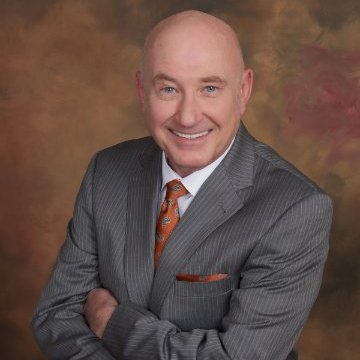Today on CPO Rising, we highlight the long and illustrious career of Gregg Brandyberry, President of Rapid Deployment Procurement Excellence, Inc., and one of three members of the CPO Rising Hall of Fame Charter Class of 2016.
 On Day 1 of Ardent Partners’ inaugural CPO Rising Procurement Executive Summit, Gregg sat on a lively CPO Panel Discussion: Procurement Agility in the Age of Innovation, where he shared his insights and perspective from his long and successful career in supply management. We were happy to sit down with Gregg and discuss his background and experience in greater detail, and we were thrilled to spotlight one of our Hall of Famers in Part One of this series. Our conversation on eSourcing was so fruitful that we decided to bring you five lessons that we learned on how to successfully implement eSourcing, care of our good friend, Gregg.
On Day 1 of Ardent Partners’ inaugural CPO Rising Procurement Executive Summit, Gregg sat on a lively CPO Panel Discussion: Procurement Agility in the Age of Innovation, where he shared his insights and perspective from his long and successful career in supply management. We were happy to sit down with Gregg and discuss his background and experience in greater detail, and we were thrilled to spotlight one of our Hall of Famers in Part One of this series. Our conversation on eSourcing was so fruitful that we decided to bring you five lessons that we learned on how to successfully implement eSourcing, care of our good friend, Gregg.
Lesson 1: Push the Value of eSourcing Technology
One of the most surprising things Gregg said about eSourcing technology is that, from his experience, not everyone on the sourcing side appreciates its value or maximizes its use. This is partly due to the fact that eSourcing events are typically driven by lower-level staff that lack the big-picture experience of category managers or senior sourcing experts. Despite their deep domain expertise, even these folks may not appreciate the value of eSourcing technology. Chief Procurement Officers (“CPOs”) and procurement leaders need to push the value of eSourcing technology within their organizations. Instead of asking, “Can you give me an example of where an auction was used here?”, staff should be asking how to set up a sourcing event from specification all the way through the sourcing event, with the intention of setting price via an eAuction.
Lesson 2: Consider Your Company’s Culture
In some respects, Gregg was lucky at GSK, where the culture was ripe for eSourcing and the timing was right. The technology was coming online in the marketplace, there was a lot of buzz around eSourcing, and his staff were genuinely excited to use it. Also, he and his team worked beneath an executive mandate to conduct eSourcing whenever possible – not that they needed it. As a result, Gregg and his team were able to run between 10,000 and 12,000 sourcing events annually, and without having to have much debate about it or to “tin cup” for new business.
Lesson 3: Push Your Staff
Although Gregg and his team fully embraced eSourcing and ran events through the solutions whenever they could, he acknowledges that not every organization is as lucky. Staff can and do resist its use, especially if the technology is not streamlined or user-friendly. And it can be a hard sell to people who do not want to learn how to use the technology because they would only use it once or twice a year. “If you weren’t doing it, you became an outcast,” said Gregg, adding that he and his team would not tolerate low adoption.
“As management, we would intervene if we saw that going on.” Some ways that staff can effectively intervene are to offer hands-on training to sourcing staff and or to have sourcing gurus “co-pilot” with inexperienced or reluctant staff. CPOs and procurement leaders can also incentivize staff to adopt eSourcing by rewarding those that run x-number of events or y-number of dollars of spend through events weekly, monthly, quarterly, annually, etc. And if all else fails, they can mandate that eSourcing be used as the rule, rather than the exception.
Lesson 4: Push Your Suppliers
A lot of people consider suppliers to be their biggest barrier to conducting eSourcing events, when in reality they should be the easiest. Buying organizations have leverage over suppliers that are eager to conduct business and generally will accommodate different B2B arrangements. Gregg and his team had some pretty basic principles that they would adhere to when suppliers would say, “Oh, we don’t do auctions.” They would say, “Well, then it’s going to be very difficult for you to win our business.” Typically, they would change their mind.
Lesson 5: Higher Cost Doesn’t Necessarily Mean Higher Quality
A point that Gregg hit during our conversation, and again during the roundtable discussion at CPO Rising 2016, was that in his experience, higher cost does not necessarily correlate with higher quality, so why pay more? “How it carries through,” Gregg said, “is the business client will be faced with an array of pricing, they’ll be afraid to pick the lowest price because there’s a psychological, ‘feel-good’ part of paying more, and I’m here to say that that’s a bunch of crap.”
Reflecting on his time spent in the automotive and manufacturing industries, Gregg explains further. “Usually, when things don’t work, it’s more about a specification that’s not right – it’s more about a requirement.” If it is an indirect category or service, the difference can be significant; and if category managers are not actively supporting how that category or service should work in their business, there is a good chance that it might fail. “It doesn’t matter what you might pay,” Gregg said, added that he says the same thing about risk. “There’s no direct correlation between what I’m paying and the risk I’m taking.”
All the more reason to get the best price one can get by conducting an auction, reverse auction, or some other type of eSourcing event.
Final Thoughts
Having run eSourcing events for roughly the last 15 years, particularly when the technology was coming online, Gregg learned by doing. He instilled his lessons upon not only his staff, but also his clients when he made the leap to consulting. For him, eSourcing has always been about giving more power back to the buyers so that they can get the best price – and best value – for the enterprise. The more spend that an enterprise puts through eSourcing, the greater the savings and the greater the value that they will experience. The question should not be, “Why should we use eSourcing?” It should be, “Why shouldn’t we use eSourcing?”
RELATED ARTICLES
Gregg Brandyberry: Profile of a CPO Rising Hall-of-Famer
Bob Kane: an “Old School” CPO with a “New School” Style
Ardent Partners Welcomes Harold “Hal” Good, Procurement Luminary, to CPO Rising 2016!

